Review: Nuits Sonores 2018
The annual Lyon event delivers once again.
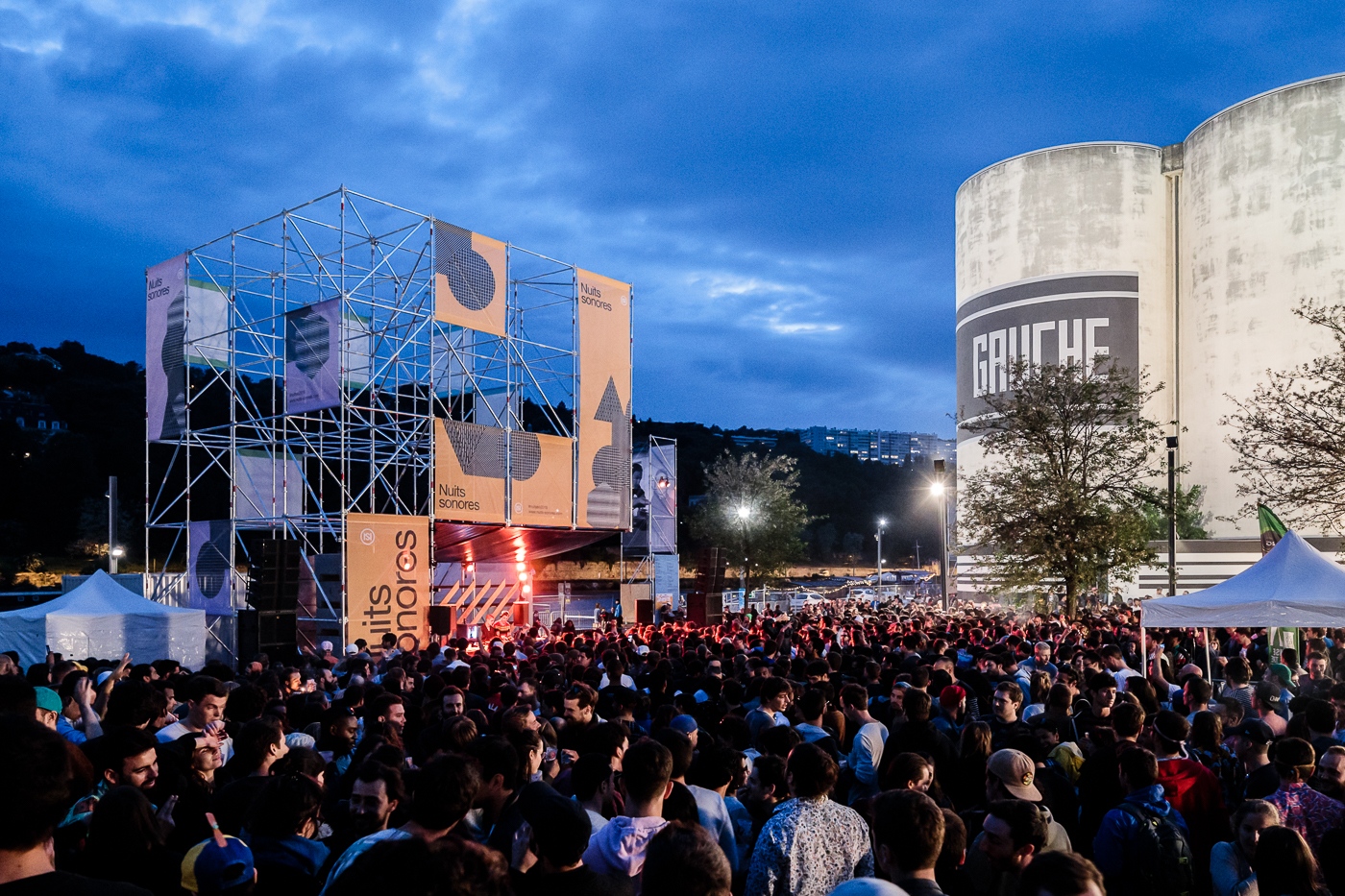
Now in its 16th edition, Lyon’s Nuits Sonores festival expanded its format this year to a schedule of eight days beginning on May 6. Sticking with their traditional A Day With format, the festival left Jennifer Cardini, Daniel Avery, Four Tet, and Paula Temple in charge of their daytime programmes at La Sucrière’s three stages. Each day was then followed by a range of after-dark options at a host of locations, giving punters a tour of the city on their journeys between venues.
The variation in environment was matched only by the diversity of the lineup. Aside from a few household names, organizers once again resisted the temptation to fill the bill with headline acts; while there were plenty on offer, lesser-known bands like the beguiling Otzeki and Lyon’s own Abschaum presented rewarding alternatives to the plentiful house and techno.
En route to the festival, my first impressions were governed by the slick app I’d been told to download, by the stylish logo and designs on posters all over the city, and by the free tote bag I was given on entry (inside was a bottle of geranium leaf body cleanser and a booklet of short stories); so far it was all very sophisticated, very sleek, and very French. This impression accompanied me inside La Sucrière’s Salle 1930, the former sugar factory turned huge white rave room that played host to some of Nuits Sonores’ biggest daytime performers. The free earplugs on offer at the bar were a must, but the sound was clearer than might have been expected of such a large space.
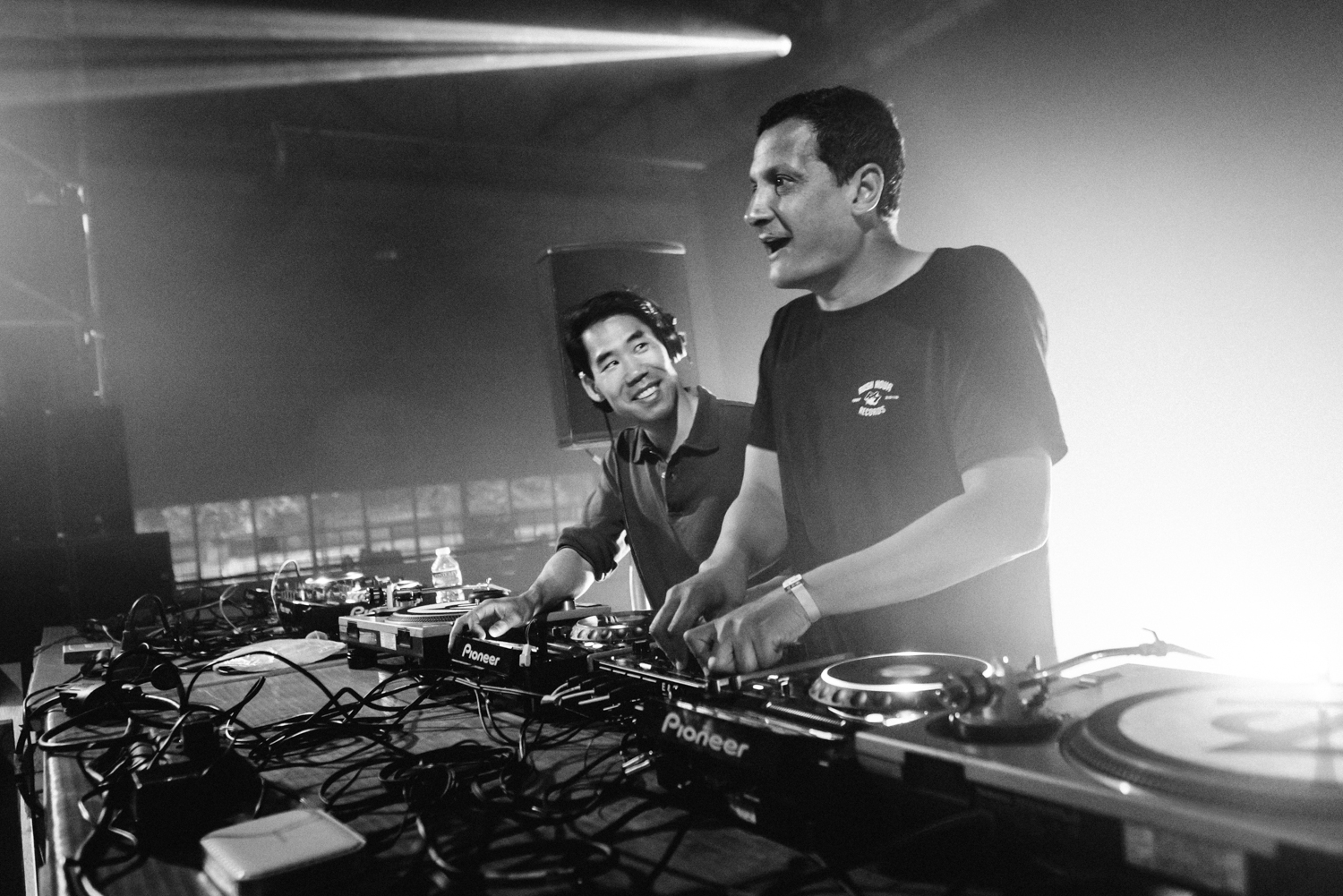
Putting this to the test on Day 1 were Maceo Plex, Dopplereffekt, and host Jennifer Cardini. Confusingly, Day 2 wasn’t until Wednesday, two days later, though Tuesday’s schedule still saw performances from Parrish Smith, Hunee, DJ Okapi and Or:La among others. It struck me that the mammoth lineup—spread over more than a week—was surely too much for most to take in, designed more for people to choose particular days that appealed to them. This arrangement creates tough decisions and inevitably some disappointment, but with four days to play with I opted to begin on Daniel Avery’s Day 2.
As he took the stage early on Thursday evening, it proved to be a good decision. Amid raucous cheers at his arrival, Avery pushed the limits of the sound system with opening track “Diminuendo,” one of the darker cuts from his new album Song for Alpha. The London artist’s choices reflected his fondness for murky 4/4 with a soft centre, while DJ Nobu and Helena Hauff threw down punishing but dewy-eyed sets either side of the main man. Elsewhere on Day 2, fans were treated to sets from Lena Willikens, Alessandro Cortini, Lanark Artefax, and the back-to-back talents of Objekt and Call Super.
Choosing artists to play at the same as you comes with the danger of having a hand in your own upstaging and Avery suffered that fate during his second hour. The crowd-pleasing drop of Daft Punk’s “Rollin’ & Scratchin’” produced the desired response, but soon after I found myself drifting outside in search of more excitement. I found it at the Esplanade, La Sucrière’s idyllic outdoor stage on the bank of the river Saône, where the infectiously joyful Dr. Rubinstein spun a heady mix of techno and acid. It was one of the most powerful sets of the festival.
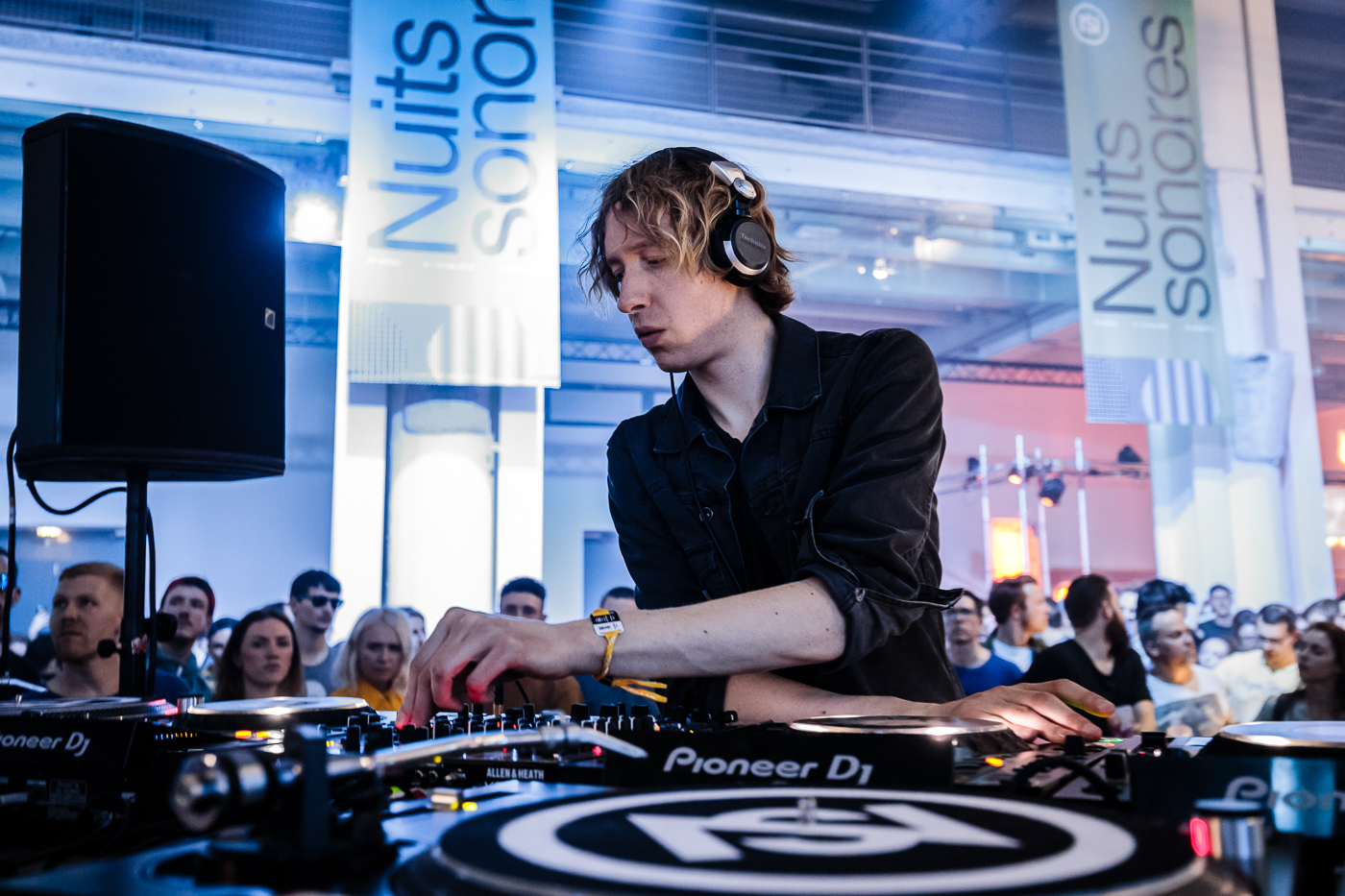

That night provided the perfect opportunity to explore Nuits Sonores’ many hidden gems, as “Le Circuit” offered up a nauseating array of talent at 17 different venues around the city. Spreading out to such an extent makes it impossible to see everything—or even come close—and only being able to be in one place at a time I had to forgo sets from Margaret Dygas, DJ Boring, and Palms Trax, all of whom played at different locations.
On the recommendation of a festival organizer, I instead plumped for Les Filles de Illighadad. One of the bill’s more left-field choices, the band consists of three women native to the Saharan region of Tuareg, Niger, playing traditional tende music adapted for electric guitar, drums and vocals (frontwoman Fatou Seidi Ghali is one of just two known female guitarists from the Tuareg region). Playing in a classroom-sized space hidden in the depths of an old wholesale market, Les Filles lulled the crowd into a state of hypnosis more commonly associated with the drawn-out psychedelic meanderings of 1960s and 70s rock bands.
This wasn’t what I’d been expecting, but I’d been charmed, so I decided to keep things alternative and headed for the free improvised jams of J.A.K.A.M. & The Ritual Forces later that night. I was told that this was the first time the Japanese electronic wizard and accompanying players (which included sitar, baglama and several percussion instruments) had played together, a detail which dumbfounded in the face of their jigsaw harmony but only added to the gig’s feverish atmosphere. Even on my first night, this felt like a typical Nuits Sonores performance, equal parts electric spontaneity and refined musical craft.
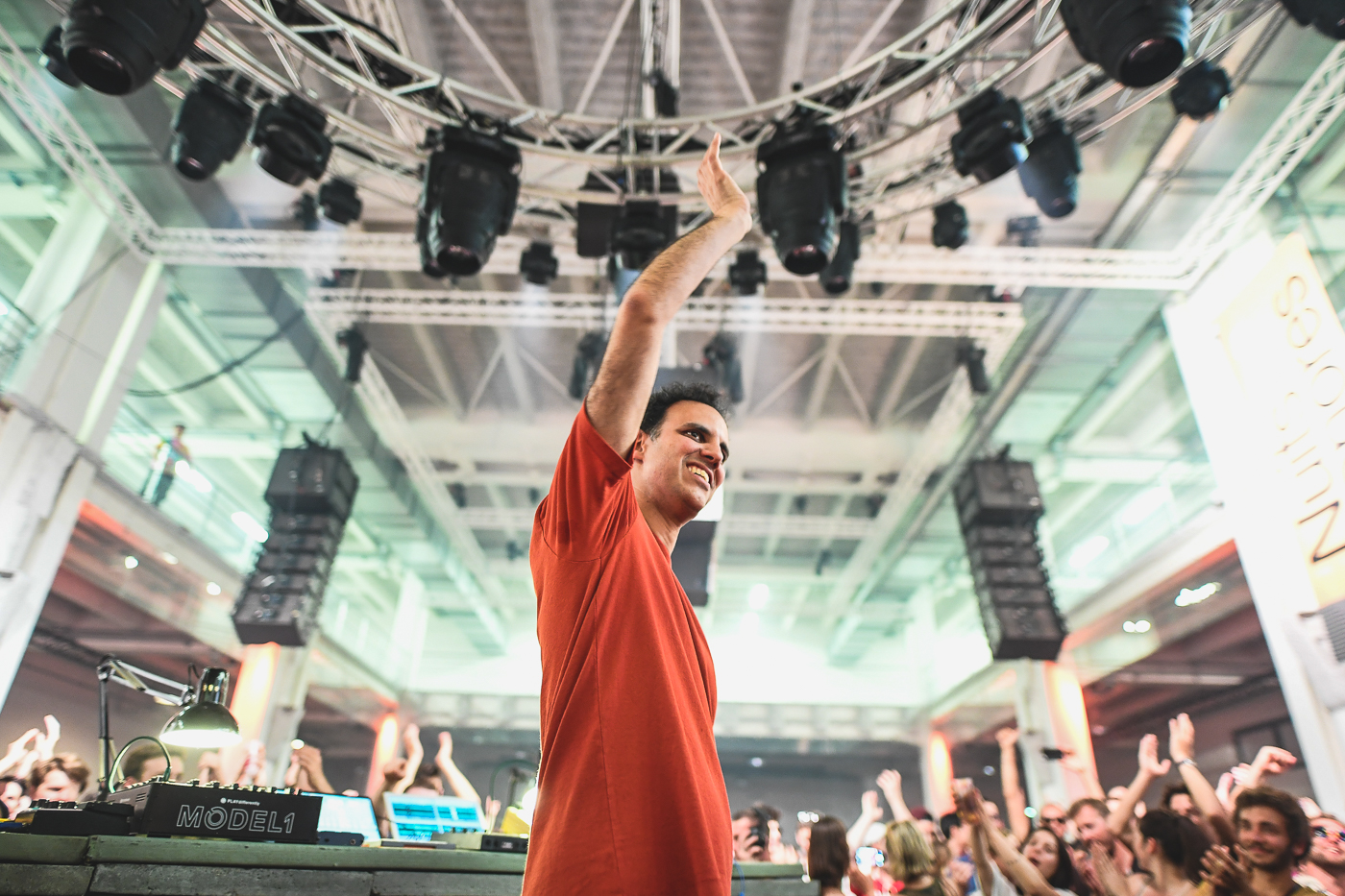
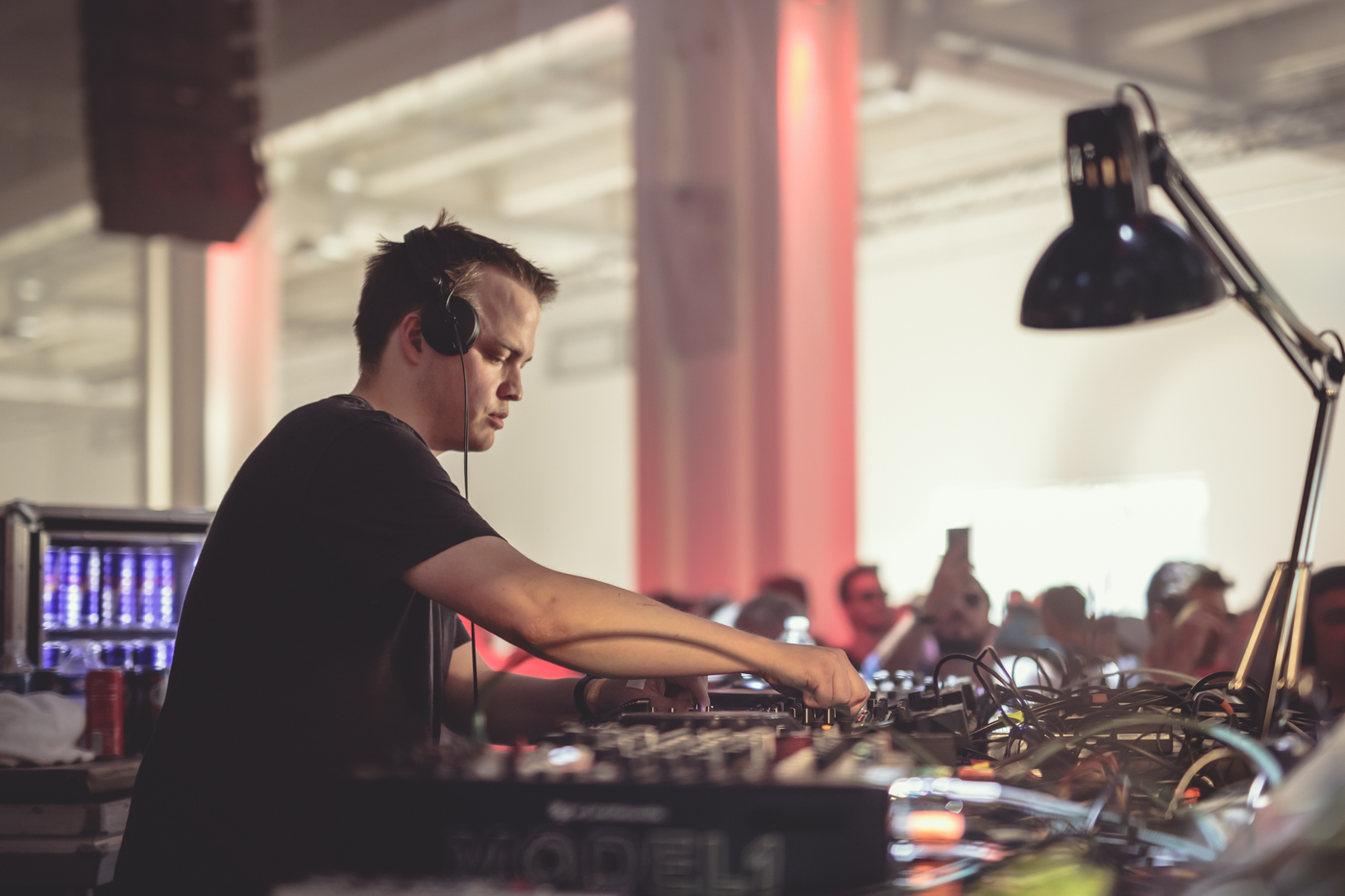
Though searching for a typical performance in such a diverse lineup feels reductive, almost every set was characterized by a vibrant interplay between artist and crowd. On Four Tet’s Day 3, Pearson Sound whipped fans into a frenzy with an onslaught of frenetic selections before Kieren Hebden stepped into the booth for a pulsating live set. The Esplanade’s glorious sun was slightly wasted on Floating Points, a thrilling producer but altogether unremarkable DJ who played a watery mix of funk and disco that could have been chosen by anyone. Le Sucre’s rooftop bar, meanwhile, threw up more headachey dilemmas in the form of Karen Gwyer and James Holden’s curious Animal Spirits project, yet more acts I was forced to miss due to the strength of the competition.
Although it was hard to tear myself away from the musical offerings for long, Nuits Sonores—and the city of Lyon—had plenty in the way of alternative entertainment. Among the highlights were La Mondialette, a table football tournament to the soundtrack of swinging techno, and the slightly too busy food market of La Salade Nomade, both activities organized by the festival itself. Equally pleasant while the sun stayed out was a gentle stroll along either the Saône or the Rhone, the two rivers between which sits most of central Lyon, though even there it was impossible to ignore the city’s heightened carnival mood as local students smoked and drank on their way to La Sucrière.
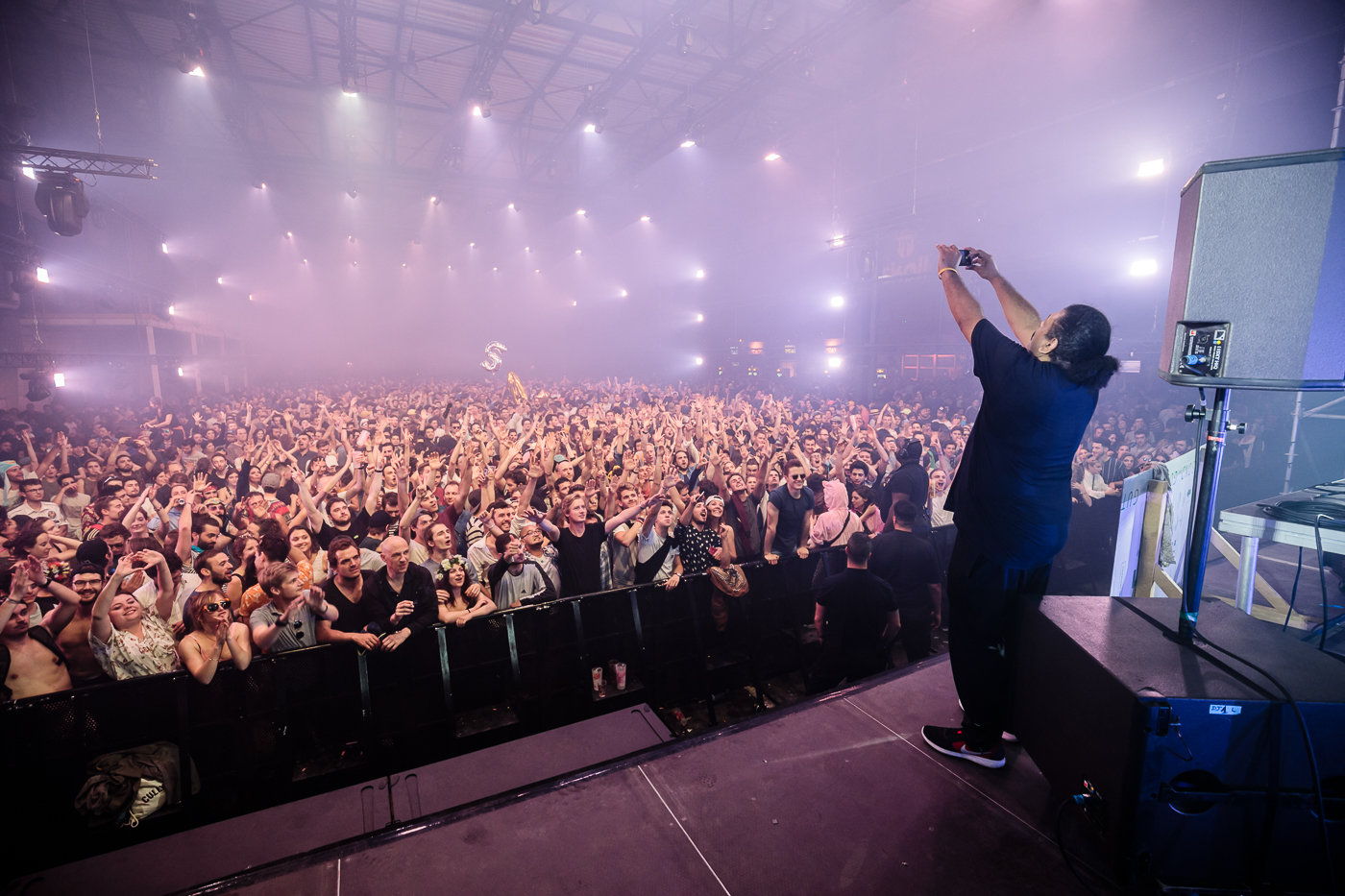
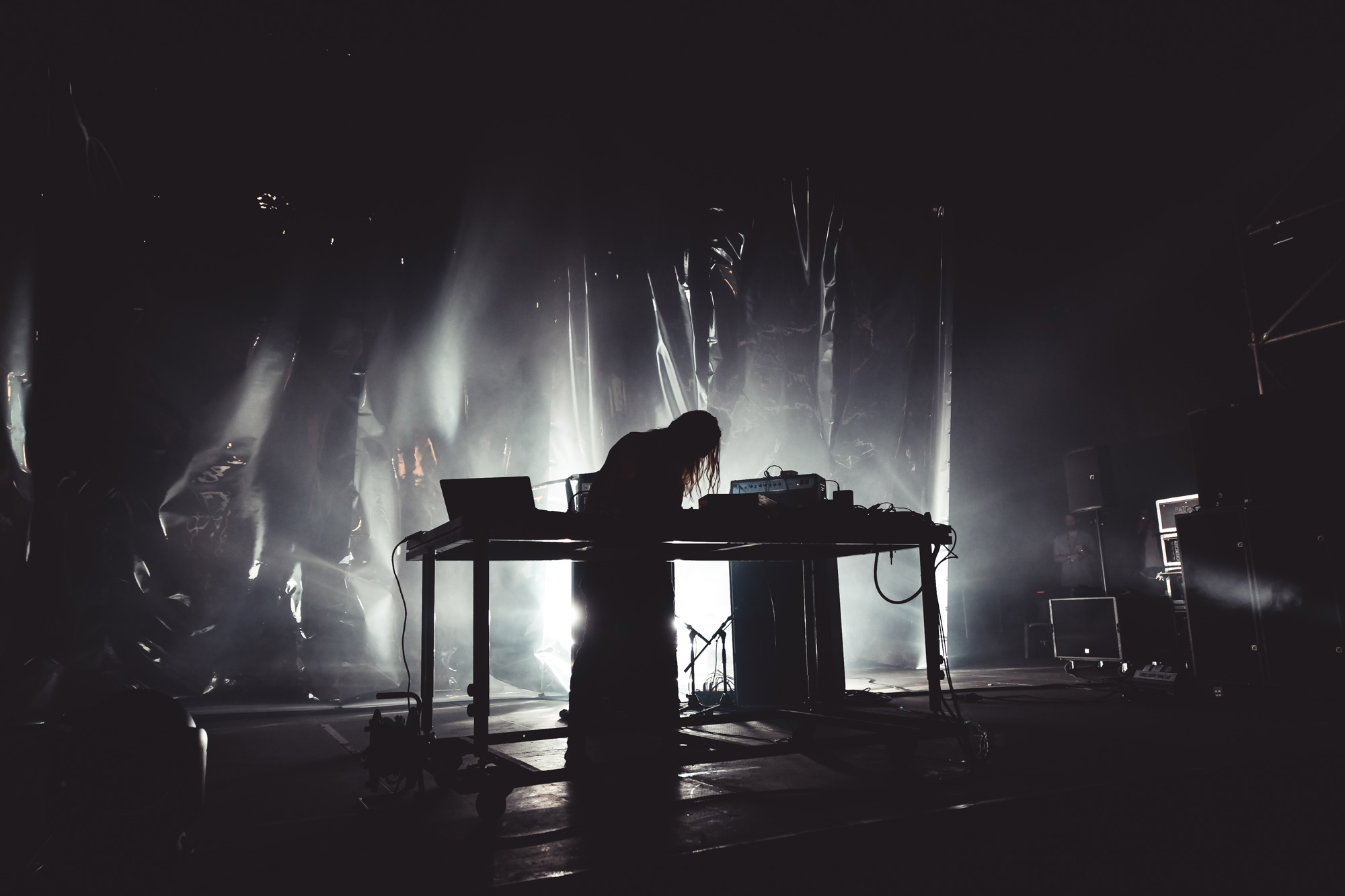
Lyon already felt like the ideal place for a city-based festival, but I hadn’t fully appreciated that until I ventured to the old factories of Fagor-Brandt on Night 3. These four lumbering warehouses in the city’s 7th arrondissement were once used for the manufacture of washing machines but became a huge industrial playground on Friday and Saturday night. I was drawn by the more experimental Stage 2—Ben Frost, Lee Gamble, and AZF all dazzled—but another 12,000 flocked for the likes of Larry Heard, Bicep, and Kerri Chandler.
In the sparse crowd which assembled to see Lee Gamble, the sublime setting began to feel somewhat cavernous (perhaps due to a certain big-room Northern-Irish duo playing on another stage). It wasn’t immediately obvious that Gamble was even there either, but sucking on a vape, hunched behind a laptop in a corner of the stage, the NTS resident turned in a performance that will live long in the memory, even if just for the sheer variety of beat signatures featured. He provided perhaps the festival’s only whiff of jungle with closing track “Ghost,” making the stage’s spacious architecture feel oddly fitting as each kick rattled off the corrugated ceiling.
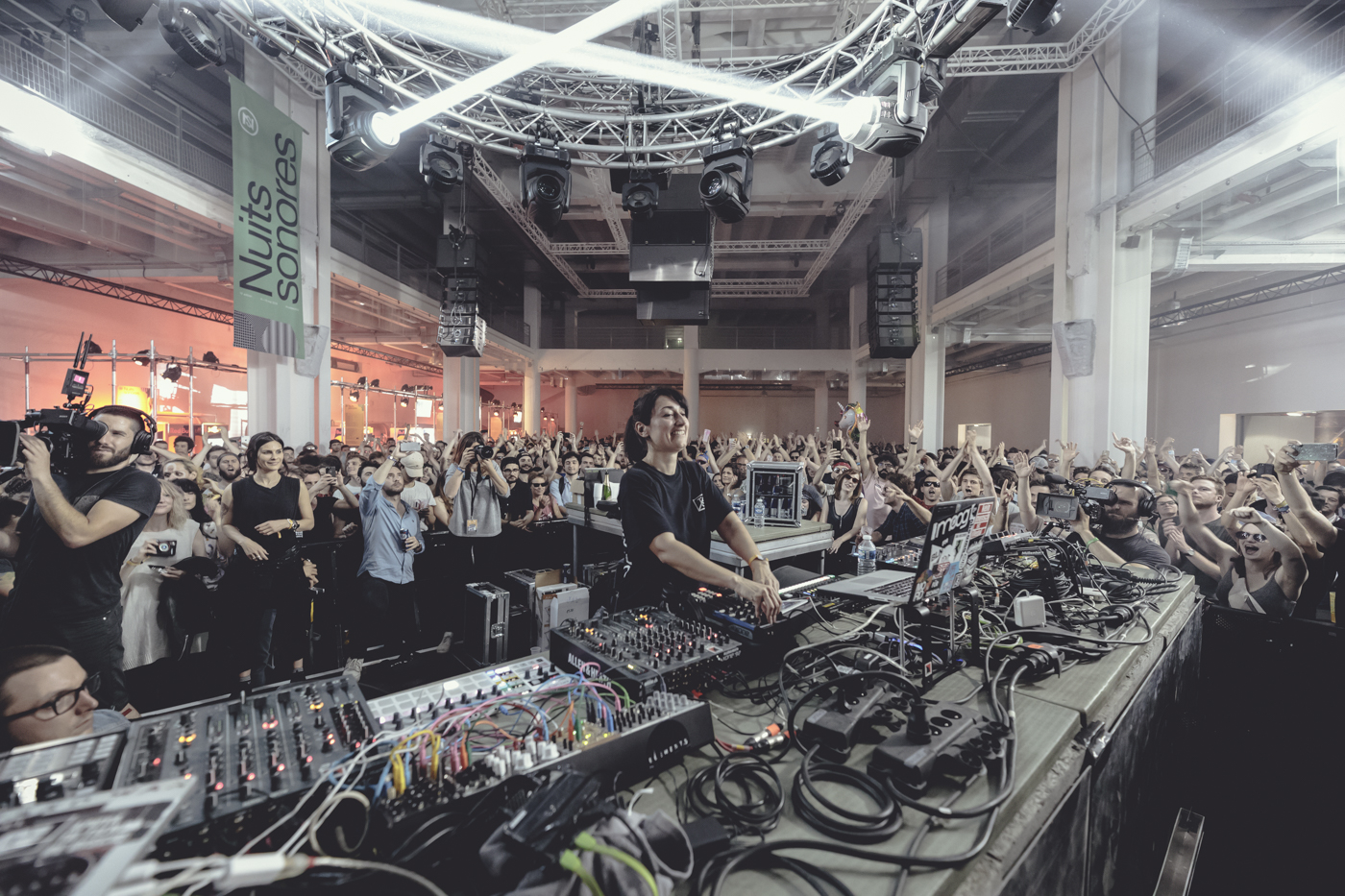
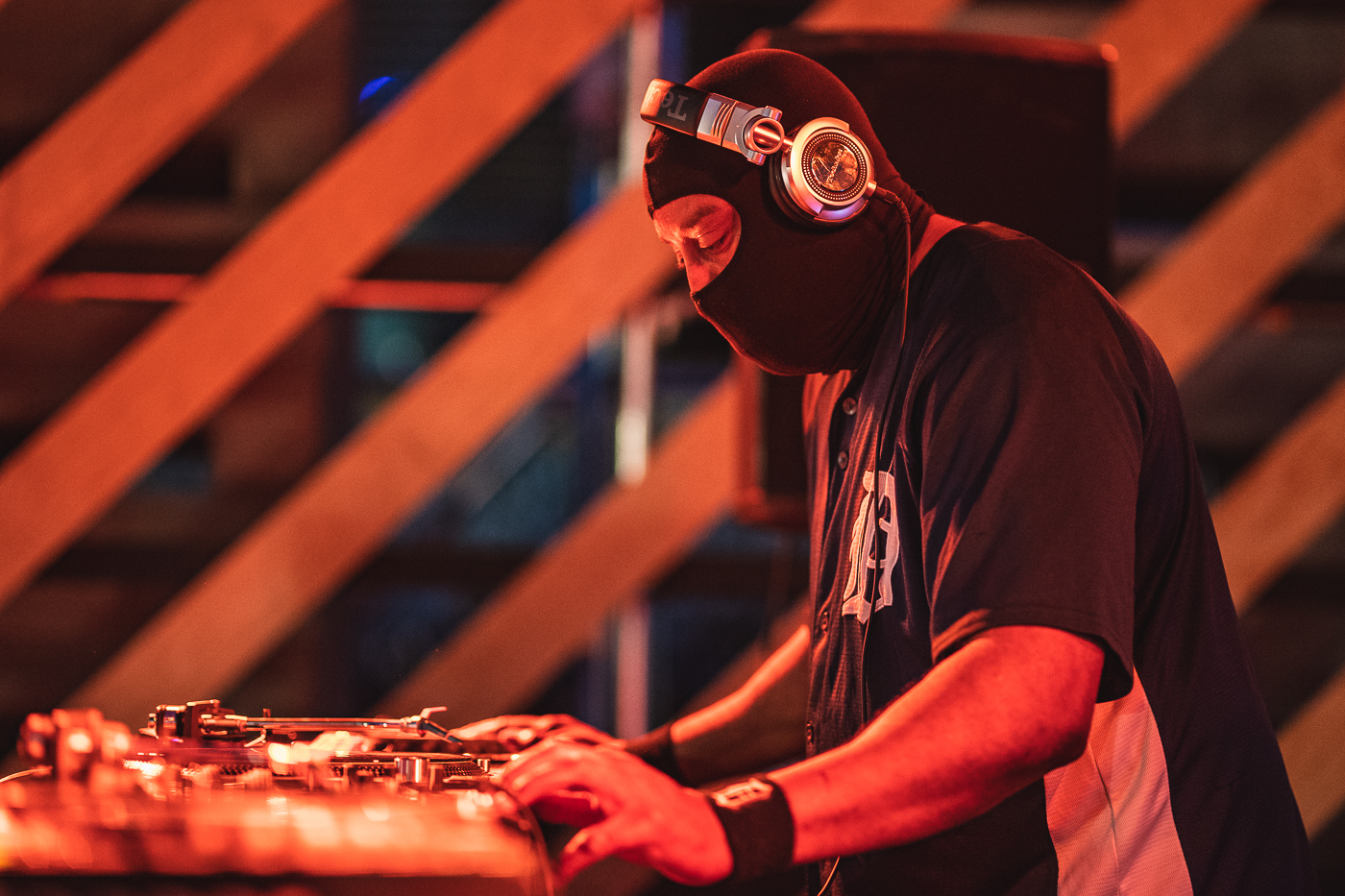
Something must be said for Paula Temple’s curation of Day 4, an all-female listing (save for DJ Stingray, more on him in a minute) that added traction to the increasingly popular shout of women being the hardest hitters on the decks in 2018. Rroxymore’s idiosyncratic brand of jittering electronics was a delight in spite of the grey skies; Rebekah’s thunderous techno put the Salle 1930 speakers through their paces once again; and Bobbie* proved herself as one of the scene’s emerging talents as the sun came out for a final stretch.
Like a good referee, the weather had performed well until now by minimizing its interference. Stingray’s set marked the point at which that—and the entire weekend—changed. After an hour of hectic, jagged electro, a gust of wind flew across the Esplanade to the sound of AFX’s “Serge Fenix Rendered 2,” bringing with it a temperature drop of about 15℃. Balaclava weather indeed.
From that point onwards, the festival became a largely indoor affair, which thanks to the infrastructure in situ was anything but problematic. Upstairs, Le Sucre’s plush bar laid on what felt like a weirdly exclusive party with a range of locally sourced acts. The Pilotwings’ space-age electro funk recalled the joyous tunes of compatriots Breakbot and Aeroplane in a celebration that could only really have happened in France. Macadam Mambo DJs closed the night with more feel-good house and techno, Orbital’s “Chime” standing out as a typical selection. The following day the rain came and didn’t go away, directing most ravers’ attentions towards Salle 1930 for the closing party. Parachuted in for the unwell Black Madonna, Seth Troxler’s versatility in the booth was another weekend highlight and warmed up the crowd just in time for the arrival of Laurent Garnier, who cuts a messianic figure among the hordes of French clubbers. The two played back-to-back for a little over an hour and formed a charming combination, but it was the Frenchman’s selections — such as Mauro Picotto’s transcendental “Ayala” — that got the biggest cheers.
That sense of local pride courses through the veins of Nuits Sonores. Everyone I spoke to seemed to be from Lyon. Each one of them outdid the last with their tally of appearances at the festival. “I’ve been every year since the start!” One punter told me. “And I’ll be back next year.”
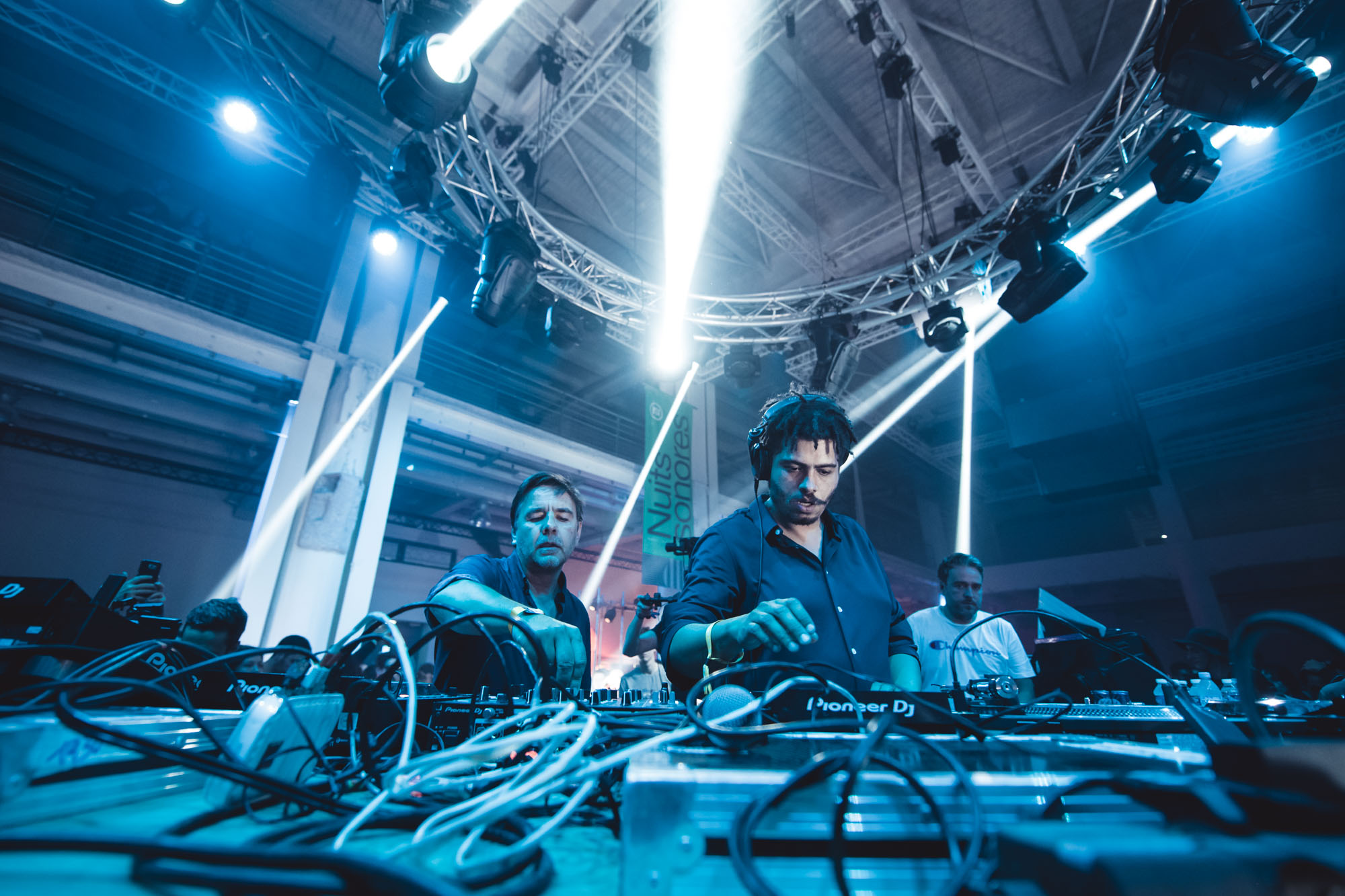
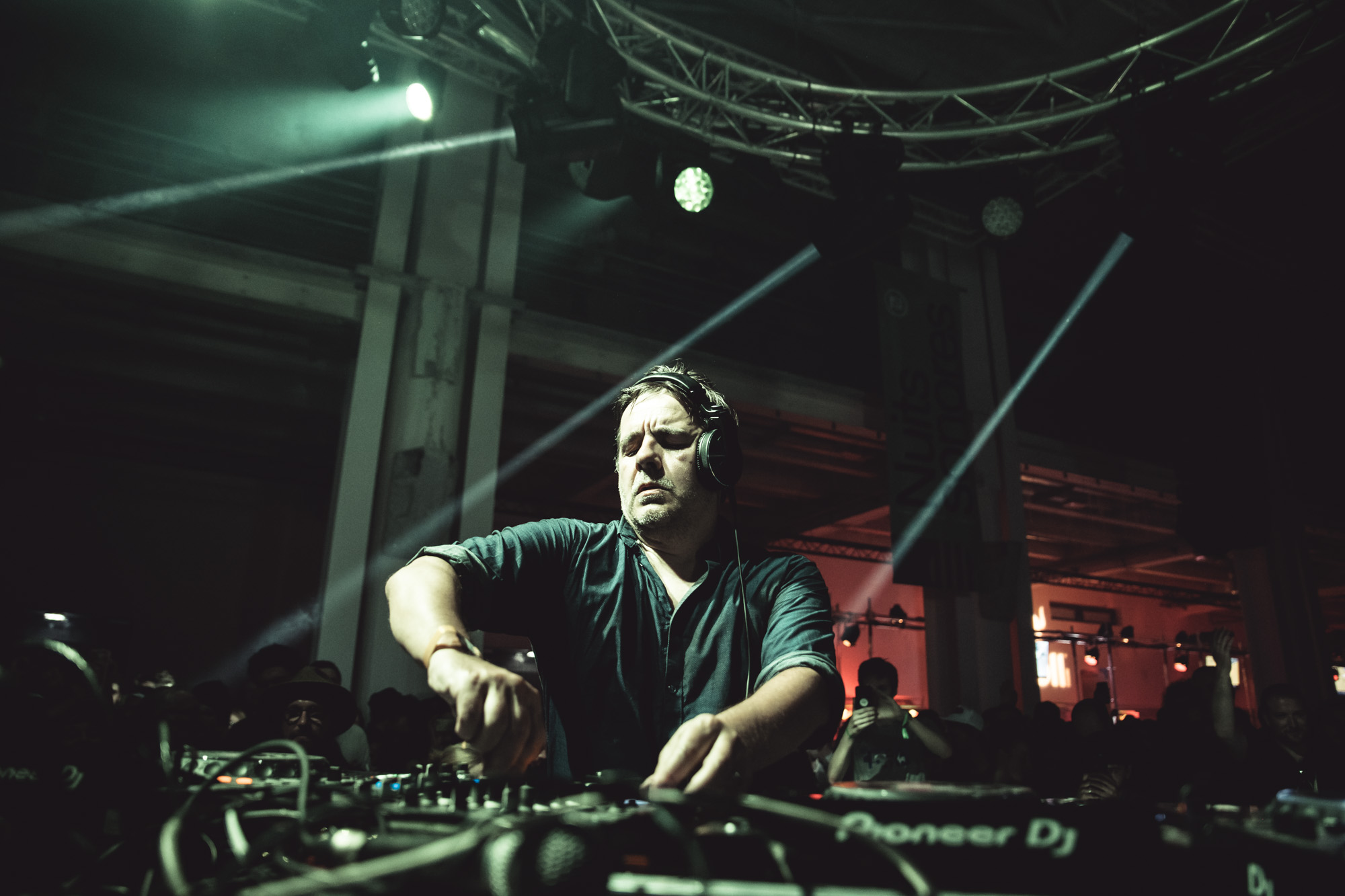
Something tells me the high percentage of local patrons was to thank for the lack of incessant Snapchatters at every stage, for the absence of 4 pm k-holers being carried off by paramedics, and for the distinctly low number of glitter-clad amateur models posing for photographs. The mood in Lyon was one of celebrating communal identity and love for music. And there isn’t much music they love more than that of Laurent Garnier.
So after a quick peek into the other room at the enjoyable but sadly secondary Motor City Drum Ensemble, I settled in for Garnier’s closing set. With the room busier than at any other point in the week and the spinner playing his 16th year at Nuits Sonores, this was what some might consider open-goal DJing. Nonetheless, he played the hits (Kölsch’s “The Road” and his own “Jacques in the Box”) and the crowd threw back everything it had left.
By the end, I was left thinking that while Nuits Sonores is a techno festival, it’s so much more than the negative preconceptions that are so often associated with that tag. The sound was heavy but clear. Drugs were an underlying presence but never center-stage. There was no concern about disturbing the locals because they all seemed to be there, welcoming you with open arms. It’s a festival to promote a vast range of the some of the finest, most forward-thinking artists around, in an ideal location. Other festivals can take note.

